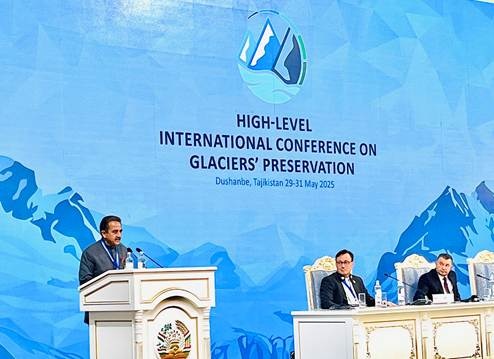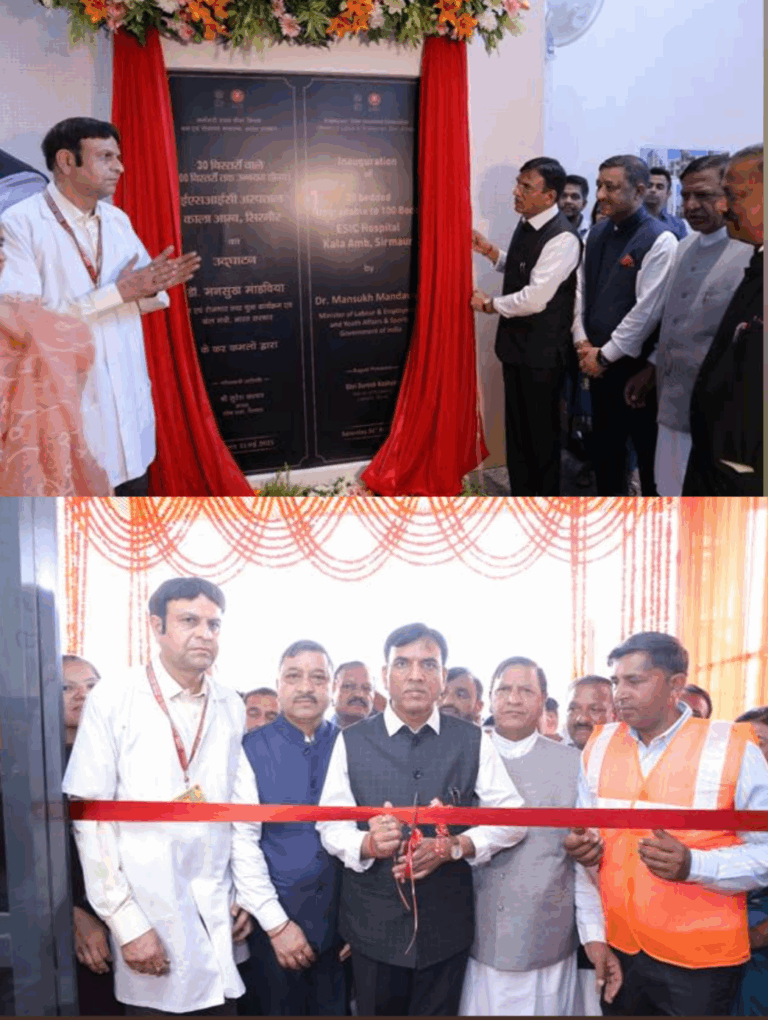
Prashnavachak News
In a powerful reaffirmation of India’s commitment to climate action and glacier preservation, Union Minister of State for Environment, Forest and Climate Change, Shri Kirti Vardhan Singh, addressed the Plenary Session of the High-Level International Conference on Glaciers’ Preservation in Dushanbe, Tajikistan. Held from May 29th to 31st, 2025, the event brought together global leaders, experts, and policymakers to discuss urgent strategies to protect the world’s glaciers – vital freshwater sources and frontline indicators of climate change. Highlighting the grave consequences of glacial retreat, Shri Singh stressed that this alarming trend is not a distant threat but a present-day crisis, posing severe risks to water security, biodiversity, and the lives of billions. Particularly vulnerable are mountain regions like the Himalayas, which are witnessing rapidly accelerating ice loss. Reiterating India’s proactive stance, the Minister showcased a suite of national initiatives under the National Mission for Sustaining the Himalayan Ecosystem (NMSHE) – a cornerstone of India’s broader National Action Plan on Climate Change (NAPCC). Central to these efforts is the Centre for Cryosphere and Climate Change Studies, a hub dedicated to glacier research and monitoring in the Indian Himalayan Region. India’s technological capabilities, led by ISRO’s Remote Sensing and GIS tools, are being deployed to monitor glacier changes in mass, extent, and dynamics. This work is reinforced by key scientific institutions including the National Centre for Polar and Ocean Research (NCPOR), National Institute of Hydrology (NIH), Wadia Institute of Himalayan Geology, and the G.B. Pant National Institute of Himalayan Environment (NIHE) – all contributing to data-driven environmental policy and glacier management. On the disaster risk front, India has bolstered its preparedness in the Himalayas with advanced early warning systems and comprehensive Glacial Lake Outburst Flood (GLOF) risk mapping, spearheaded by the National Disaster Management Authority (NDMA). Shri Singh also underscored the importance of regional cooperation in strengthening resilience, sharing data, and coordinating climate responses, especially across vulnerable mountain ecosystems. Speaking on the broader climate landscape, the Minister reaffirmed India’s commitment to equity and the principle of Common but Differentiated Responsibilities and Respective Capabilities (CBDR–RC). He emphasized that while South Asia’s contribution to global emissions is minimal, the region faces some of the most severe climate impacts. Under the leadership of Prime Minister Shri Narendra Modi, India has made remarkable progress in its climate commitments, achieving over 48% of its installed electricity capacity from non-fossil fuel-based sources, reducing the emission intensity of its GDP by 36% between 2005 and 2020, and creating an additional carbon sink of 2.29 billion tonnes of CO₂ equivalent through enhanced forest and tree cover from 2005 to 2021. These milestones reflect India’s balanced and ambitious climate strategy that prioritizes sustainable development while addressing global environmental challenges. Shri Singh called for context-specific climate strategies that respect varying national circumstances and historical responsibilities, especially in developing nations. Concluding his address, the Minister welcomed the declaration of 2025 as the International Year of Glaciers’ Preservation and the Decade of Action for Cryospheric Sciences (2025–2034). He urged the global community to scale up cooperation, support scientific collaboration, and provide increased financial and technological assistance to developing countries. “India stands ready to partner with the world in safeguarding our glaciers, protecting our ecosystems, and building a resilient future for generations to come,” Shri Singh affirmed.












